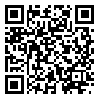BibTeX | RIS | EndNote | Medlars | ProCite | Reference Manager | RefWorks
Send citation to:
URL: http://jmums.mazums.ac.ir/article-1-7237-en.html
Identification of materials at the nanometer scale using microscope tools or nanoscopy helps in better understanding of cell physiology. It is one of the available methods in evaluating the changes caused by physico-chemical agents. In recent years, nanoscopic tools have developed greatly in ultrastructural studies or diagnostic purposes and drug screening for human protozoan infections including plasmodium spp. and Leishmania spp. The present study aimed at evaluating the application of nanoscopic technologies in studies carried out on protozoal infections, especially Leishmania parasite. A non-systematic review of published articles (1998-2014) was performed in electronic databases as PubMed, Google scholar, Scopus, Magiran, Iranmedex, and Web of Science. The search keywords included
| Rights and permissions | |
 |
This work is licensed under a Creative Commons Attribution-NonCommercial 4.0 International License. |






